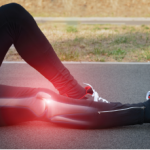NEW YORK (Reuters Health)—Patients undergoing total joint replacement are younger now than they were in 2000, new research indicates.
The average patient undergoing a total hip replacement (THR) in 2014 was 64.9 years, while the average patient in 2000 was 66.3 years. Similarly, the average patient undergoing a total knee replacement (TKR) was 65.9 in 2014, and was 68.0 in 2000, according to a review of data from the National Inpatient Sample (NIS) database.
“These differences may not seem like much, but an average decrease of two years in a pool of 1 million people is a significant difference,” lead researcher Dr. Matthew Sloan, an orthopedic resident at the University of Pennsylvania in Philadelphia, tells Reuters Health by email. “It’s also a meaningful difference, when you take into account the fact that these total joint replacements have a finite lifespan.”
“The technology for total hip and knee replacements continues to improve,” he adds. “However, at some point the implant wears out. We believe modern implants without any unforeseen complications should last 20 years or more. The problem with an increasingly younger group of patients having these procedures, it becomes more likely that the implant will wear out during their lifetime. When this happens, a second surgery is required to revise the joint replacement. These procedures are not as successful as the initial surgeries, they are bigger operations, they take longer, and now the patient is 20 years older and not as strong as they were when they had the initial procedure.”
For these reasons, revision joint replacement surgeries are riskier and prone to higher rates of complications, such as early failure or infection. The goal is to wait as long as possible, so that the patient may only need to undergo a single surgery in their life, he adds.
Using the NIS database, Dr. Sloan and Dr. Neil Sheth, also at the University of Pennsylvania, evaluated trends in age, sex and race among people who had total joint replacement. They reported their findings March 8 at the American Society of Orthopaedic Surgeons’ annual meeting.1
The data show that women continue to make up the majority of THR and TKR patients (55–62%), although men are making up a larger proportion of these patients than they did in 2000.
“We know that women have a higher rate of arthritis compared to men, which may be why they undergo these procedures more commonly,” Dr. Sloan said. “However, we don’t know what other factors may play a role in the decision to undergo surgical treatment.”

